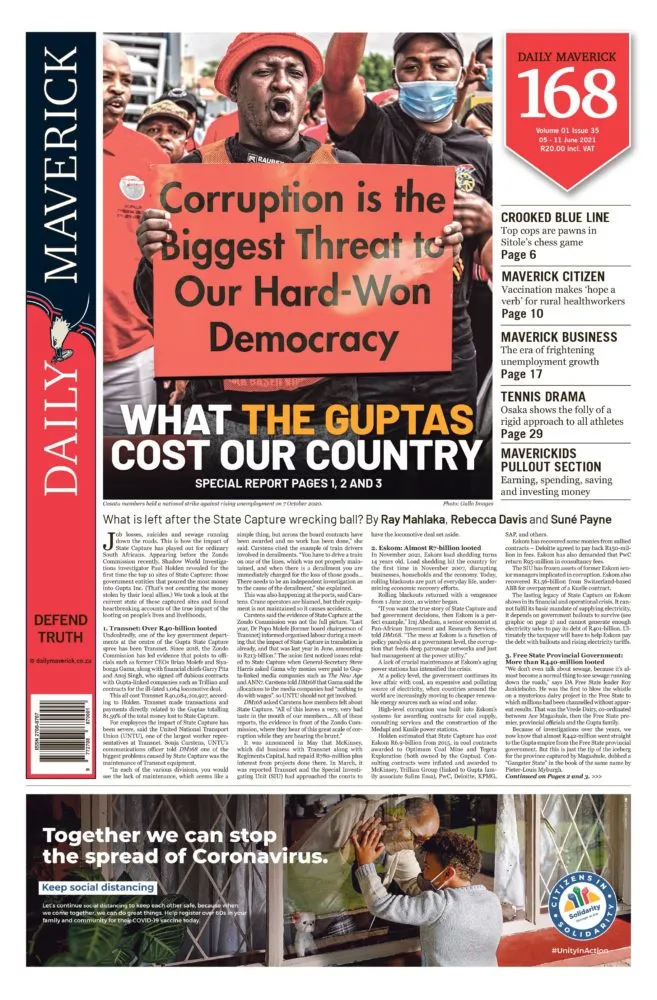First published in the Daily Maverick 168 weekly newspaper.
Bitcoin disciples would argue that this is still a considerable amount of money, and they would be right. But what is almost more remarkable is how the entire world of the asset class that is cryptocurrency has changed over the course of the past year or so. Previously, crypto was a fringe realm of tech-obsessed teenagers and Silicon Valley denizens mining coins in their basements.
Now, this could not be further from reality. The market has been almost entirely institutionalised in months. Wall Street has taken over. There are crypto prime brokers lending on the margin, crypto hedge funds, crypto institutional investors, crypto-focused family offices and broker-funded trading between cryptocurrencies that are then used as collateral for more gearing.
The miners are now largely industrial operations in remote parts of Asia and the Arctic Circle, where these secretive undertakings can take advantage of cheap electricity and cold climes for their servers.
Cryptobrokerage Coinbase recently listed on the Nasdaq with a market capitalisation of $76-billion, while the total value of Bitcoin alone is worth more than $1-trillion.
For someone who has spent most of their career in traditional finance it all seems somewhat bewildering. How many times in one’s life does not just a new investment opportunity come along, but also an entire asset class of new investment opportunities?
However, it seems to me that there are two paradoxes that cryptocurrencies and Bitcoin in particular will have to resolve if they are to become a sustainable asset class.
First is the question of whether it is a currency or an investment security. Do you buy Bitcoin as a means of exchange or because you hope to sell it down the line and pocket a return?
The two continue to be mutually exclusive. Some do own it to buy stuff. But for those devotees of Bitcoin who are told to HODL or “hold on for dear life” through the market contortions, the two objectives are in direct conflict. How can a currency become a global means of exchange when most people holding it are determined not to let it go, as they wait for higher prices down the line?
When you HODL you are becoming richer, but you are not transacting. That is good for Bitcoin the asset, but it is problematic for Bitcoin the money, because you are keeping what you HODL out of the markets.
That is where the Bitcoin aficionados have made a mistake. They think that when the price of Bitcoin goes up it is proof that the technology is closer to making it a proper currency. It is not! Lots of things go up and down in value – collectable stamps or cases of First Growth Bordeaux. But that does not make them money; it makes them assets.
Of course, for these Bitcoin “Maximalists” that is beside the point. It has long since moved on from being a “mere” currency, they argue, it is a “network” that provides its own system and energy that is removed from the soon-to-be-inflated world of fiat currency.
In this instance it is an asset, like gold – one that doesn’t generate a return but by dint of its finite supply will be the ultimate inflation hedge, and will not need corrupt governments or central banks to manage it.
This is an interesting line of argument, but once again, the past few months have shown that it is too volatile to be taken seriously as a store of value. Faced with Armageddon, I am not sure about you but I would prefer to head for the hills with more than a few Bitcoins.
And herein lies the second paradox.
As an outsider, looking into the world of Bitcoin it would seem that a lot of what triggered the rush of blood to the head in the cryptomarkets last year was the same as what led to sugar highs in all asset classes; ultraloose monetary policy and lavish fiscal spending inflated equities, commodities and bonds alike. I have no doubt that liquidity from central banks and from Donald Trump and Joe Biden’s cheques to Americans found its way into Bitcoin.
Since then, however, with inflation appearing in the economy and interest rate hikes on the horizon, things have cooled down and Bitcoin has sold off aggressively.
Ironically, therefore, inflation could be the worst thing for Bitcoin investors. Tightening monetary policy could be a noose around the neck of these animal spirits. Perhaps to further fuel the tartrazine and caffeine euphoria, what is needed is a weakening economy and another round of monetary and fiscal largesse.
I, for one, will be watching with interest from the sidelines. DM168
This story first appeared in our weekly Daily Maverick 168 newspaper which is available for free to Pick n Pay Smart Shoppers at these Pick n Pay stores.

















 Become an Insider
Become an Insider
Sounds about right to me! Interested spectator is as close as I’ll get
I would much rather be fleeing accross Africa with a bunch of gold and silver coins with which I can buy a loaf of bread and bribe a border guard.